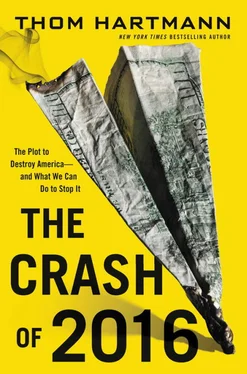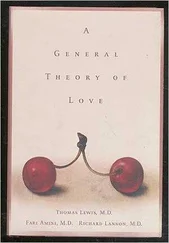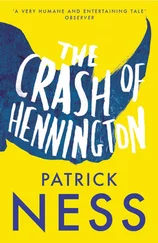Some of the most well known American companies, from all sectors, are contributing to this trend. Caterpillar, Cisco, Chevron, GE, Intel, Merck, Oracle, Stanley Works, and United Technologies have all outsourced at least 45 percent of their workforce to another country. GE has more than half of its workforce in other countries and yet GE’s CEO, Jeffrey Immelt, was appointed to head President Obama’s Economic Recovery Advisory Board to provide guidance on how to fix our economy.
And this outsourcing of our manufacturing base is creating enormous trade deficits.
For example, consider South Korea, where our automobile trade deficit alone is a whopping $10.8 billion. In 2009, South Korea exported $11.72 billion worth of cars into the US economy. We, on the other hand, were only allowed to export about $492 million worth of cars into theirs. 84
Or India, where in 2010 we ran up a $10.3 billion trade deficit. 85
Or China, where our 2010 trade deficit is a mind-boggling $273 billion—the largest trade deficit between two nations ever recorded in the history of the world.
Our trade relationship with China is particularly worrisome. While other nations are just banking off our dumb trade policies promoted by American CEOs who’ve sold their allegiance to Davos-promoted globalism instead of the United States, China is preparing to be the next world superpower.
Loose lips sink ships, but corporations that have developed some of America’s most advanced technologies are more than willing to sell off that technology to the Chinese government if they can just have a little taste of Chinese consumerism.
Leading IT manufacturers and defense industries are blatantly helping to grow the technological capacity of China in return for deeper market penetration and higher profits. In 2020, China will roll out its first full-size commercial airliner built thanks to technology largely developed by Boeing and Airbus. 86
Of course, American transnational corporations have historically cavorted with nations whose interests were similarly opposed to those of the United States—morally at least. American CEOs made deals with Mahmoud Ahmadinejad in Iran—as was the case with foreign subsidiaries of Koch Industries, America’s second-largest private corporation. Other corporate interests worked with Nazi Germany and Apartheid South Africa. They signed contracts with dictators like Mu‘ammar Gadhafi in Libya (even while our military was bombing Gadhafi).
Trade expert and former Commerce Department official in the Clinton White House Patrick Mulloy wrote in a 2006 report by the United States-China Economic and Security Review Commission, “The interests of the U.S.-based multinational corporations, which have done so much to influence our current policies toward China, are often not aligned with the broader interest of our nation.”
Again, with nationalism off the table, it’s only about profits at whatever cost. Mulloy concludes, “Focused on ‘shareholder value’… [corporations] are not charged to consider the larger impact of their decisions on the American economy and workers, and the impetus they give to China’s growing international, political, and military strength.” 87
Eamonn Fingleton, an economist, best-selling author, and former editor at Forbes , who predicted both the Japanese stock market crash in 1987 as well as the tech-bubble crash in 2000, described this wild American sell-off by saying, “For just a few years of profits, America is giving away a technological inheritance that took generations to accumulate… the big gainers are… just a few thousand top corporate executives,” the guys hanging out at Davos, “who reap huge returns via bonuses and stock options.” 88
Thanks to them, our nation’s current account deficit, primarily our trade imbalance, in 2006 was 7 percent of GDP. That’s the highest peacetime current account deficit ever recorded—second only to Italy in 1924, a year before Benito Mussolini anointed himself dictator of fascist Italy. 89
There’s a lot of money to be made seeking out cheaper and cheaper labor markets. So wealth was growing exponentially, which made both political parties buy into this new global paradigm.
Columnist Chrystia Freeland nailed this mind-set perfectly in her 2011 article “The Rise of the New Global Elite,” which ran in The Atlantic magazine. She reported that one influential American hedge fund manager argued that it didn’t matter if the US economy was in peril, because “if the transformation of the world economy lifts four people in China and India out of poverty and into the middle class, and meanwhile means one American drops out of the middle class, that’s not such a bad trade.” 90
And yet, millions were being uprooted around the world as a result of these new globalized markets. Subsistence farmers in South America and India were shut out of trade, put out of business by massive transnational agribusiness, and forced into the slums.
Meanwhile, entire communities near Detroit and Camden that once buzzed with manufacturing plants and middle-class trappings were also leveled by the forces of globalism.
There were voices speaking out. People warning that the Royalists were not bringing with them genuine prosperity for all, but only prosperity for the few. They argued it was only an illusion that we were all getting rich and everyone’s conditions around the planet were improving thanks to deregulation and global free trade. In reality, they warned, just as Spengler and Galbraith had warned before the last Great Crash, our cultural core was decaying.
As Galbraith noted, when the madness takes hold, “the wise remain silent.”
Sir James Goldsmith didn’t remain silent. He questioned the logic of the time in his book, The Trap , when he wrote, “Many believe that the problems we face can be resolved by doing what we always have done, but doing it more effectively. They believe that we are going in the right direction but we should redouble our efforts to achieve our objectives.” 91
Goldsmith then posed three questions to those who thought the Royalists were on the right track:
• How is it that nearly two hundred years after the birth of the Industrial Revolution, which produced humanity’s greatest period of economic expansion, the absolute number of those living in misery, both material and social, has grown exponentially?
• How is it that the world’s slum population has developed at a rate vastly greater than that of global population growth?
• And how is it that despite incredible technological innovations the world now faces man-made threats of quite different magnitude from the wars, famines, epidemics and other upheavals of previous dark ages?
Goldsmith asked these questions in 1994. Little did he know things were about to get a lot worse when the psychopathy was allowed to run loose on Wall Street a few years later.
Reagan’s decision to stop enforcing the Sherman Antitrust Act led to a boom of big companies becoming enormous—a mergers-and-acquisitions (M&A) frenzy, led by “M&A Artists,” “LBO Artists” (Leveraged Buyouts), and “Corporate Raiders.”
The philosophy that drove the Reagan administration (and had infected the last two years of the Carter administration before it, which deregulated trucking, travel, and several other industries) opened the door for executive-suite psychopaths.
“Chainsaw” Al Dunlap, “King” Carl Icahn, Willard “Mitt” Romney—all made hundreds of millions to billions of dollars strip-mining companies, regardless of the impact of their actions on the employees. Famously, Dunlap bragged about how many thousands of employees he’d fired, and Romney bragged, “I like to fire people.”
Читать дальше












